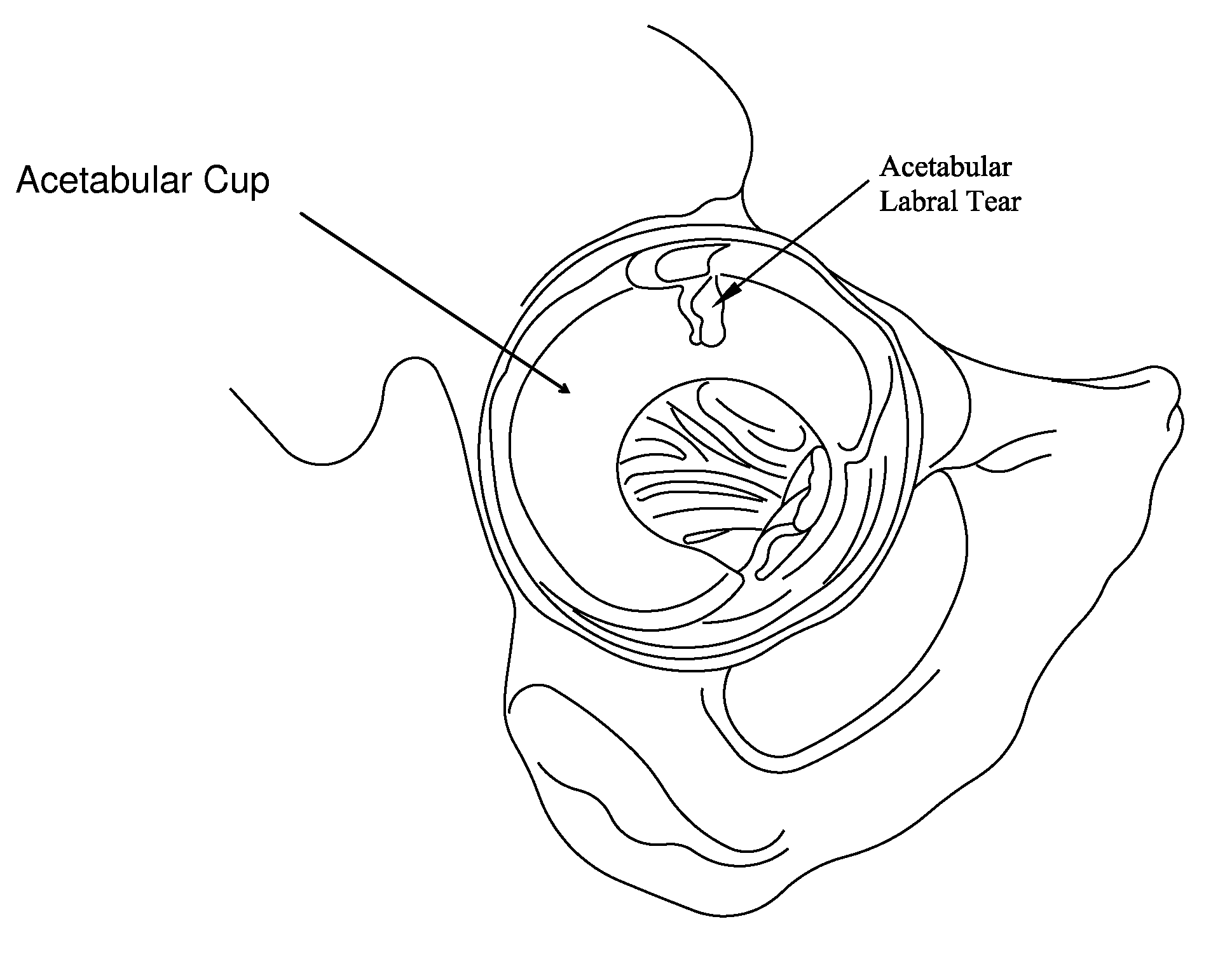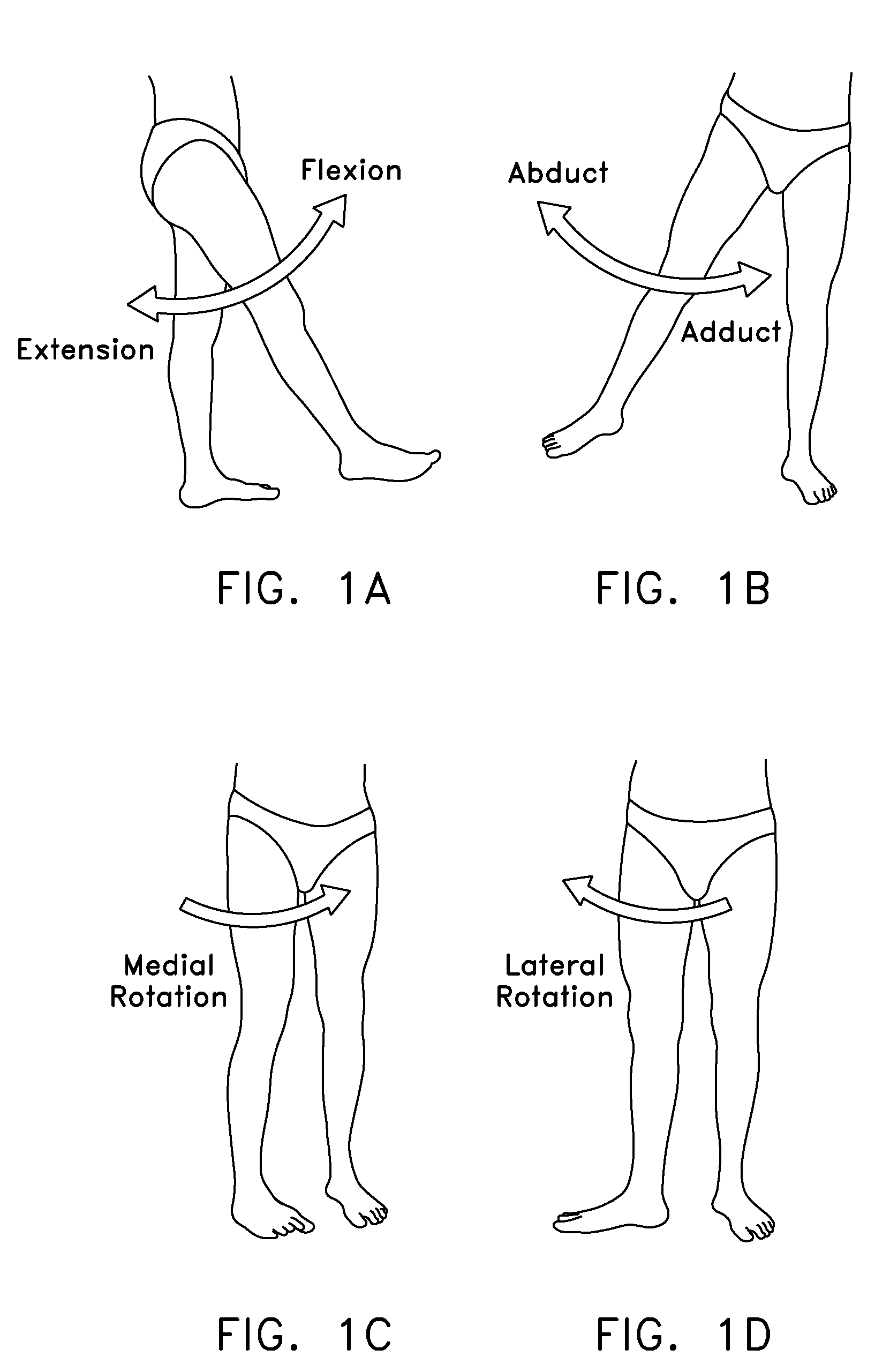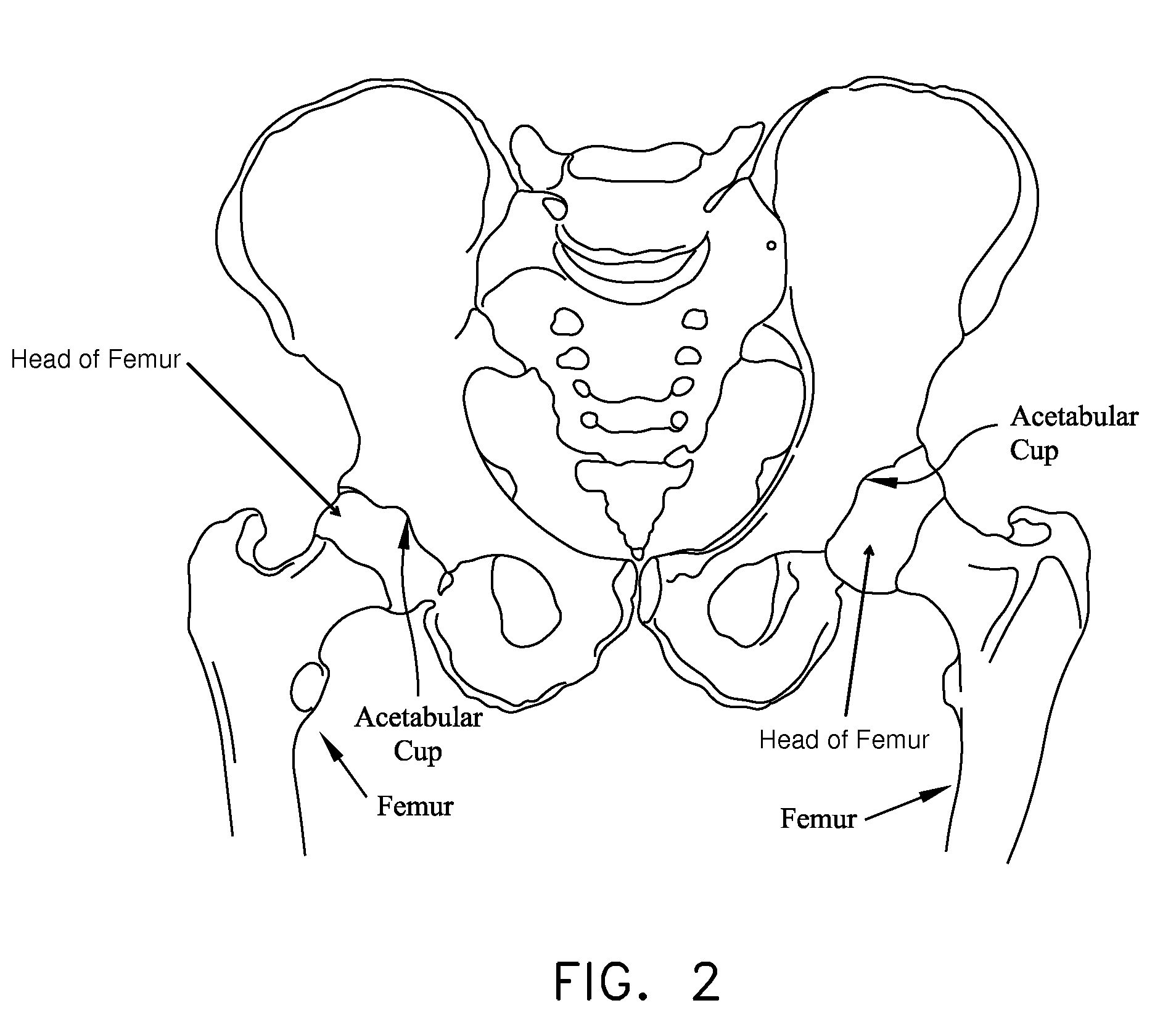In other cases, the
pathology may be minor at the outset but, if left untreated, may worsen over time.
A number of procedures have been developed for treating hip pathologies short of partial or
total hip replacement, but these procedures are generally limited in scope due to the significant difficulties associated with treating the hip joint.
In some cases, and looking now at FIG. 13, this impingement can occur due to irregularities in the geometry of the
femur.
In other cases, and looking now at FIG. 14, the impingement can occur due to irregularities in the geometry of the acetabular cup.
Impingement can result in a reduced
range of motion, substantial pain and, in some cases, significant deterioration of the hip joint.
Defects of this type sometimes start out fairly small but often increase in size over time, generally due to the dynamic nature of the hip joint and also due to the weight-bearing nature of the hip joint.
Articular defects can result in substantial pain, induce and / or exacerbate arthritic conditions and, in some cases, cause significant deterioration of the hip joint.
More particularly, in many cases, an accident or sports-related injury can result in the labrum being torn away from the rim of the acetabular cup, typically with a tear running through the body of the labrum.
These types of injuries can be very painful for the patient and, if left untreated, can lead to substantial deterioration of the hip joint.
As a result, it is relatively difficult for surgeons to perform minimally-invasive procedures on the hip joint.
This
limited access further complicates effectively performing minimally-invasive procedures on the hip joint.
In addition to the foregoing, the nature and location of the pathologies of the hip joint also complicate performing minimally-invasive procedures on the hip joint.
This makes drilling into bone, for example, significantly more complicated than where the angle of approach is effectively aligned with the angle at which the instrument addresses the tissue, such as is frequently the case in the
shoulder joint.
Furthermore, the
working space within the hip joint is typically extremely limited, further complicating repairs where the angle of approach is not aligned with the angle at which the instrument addresses the tissue.
As a result of the foregoing, minimally-invasive hip joint procedures are still relatively difficult to perform and relatively uncommon in practice.
Consequently, patients are typically forced to manage their hip pain for as long as possible, until a resurfacing procedure or a partial or
total hip replacement procedure can no longer be avoided.
These procedures are generally then performed as a highly-invasive, open procedure, with all of the disadvantages associated with highly-invasive, open procedures.
While the fibrous
capsule provides an important function in encapsulating the hip joint, it also presents a significant obstacle to arthroscopically treating pathologies of the hip joint.
However, the penetration of this tough
physical barrier must be effected very carefully, since the
anatomical structures which are located immediately below the fibrous
capsule are frequently delicate and sensitive to damage.
As a result, the
workspace located between the fibrous
capsule and the underlying bone is typically quite limited, thereby presenting significant
visualization and operational challenges to the surgeon.
By way of example but not limitation, arthroscopic treatment of
cam-type femoroacetabular impingement (i.e.,
cam-type FAI) is significantly complicated by the limited
workspace present within the fibrous capsule.
However, the lack of
workspace between the overlying fibrous capsule and the underlying
femur can make such debridement procedures technically challenging for even the most experienced surgeons, because it can severely limit the field of vision within the workspace and inhibit proper positioning of the burr.
However, heretofore, it has been technically challenging to arthroscopically suture closed the laid-open fibrous capsule at the conclusion of the
therapeutic procedure.
This is largely because (i) the workspace present at the remote
surgical site is quite limited, and (ii) the fibrous capsule is made up of unusually tough tissue, which can make it extremely difficult to arthroscopically pass suture through the fibrous capsule in the suturing operation.
 Login to View More
Login to View More  Login to View More
Login to View More 


